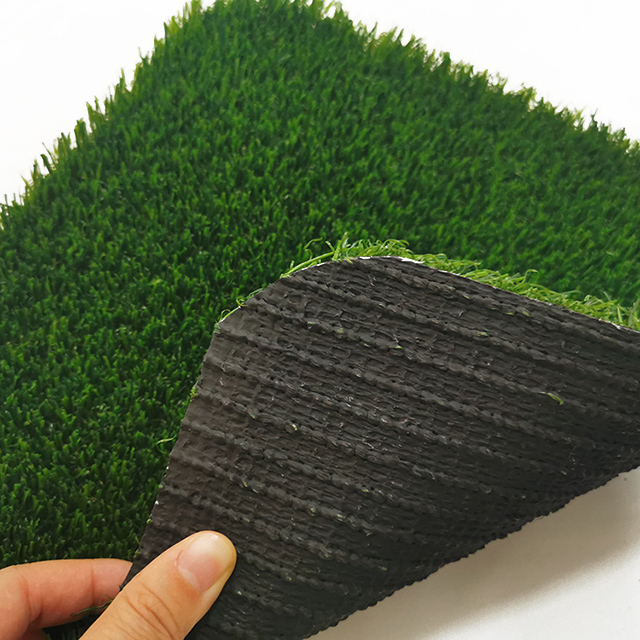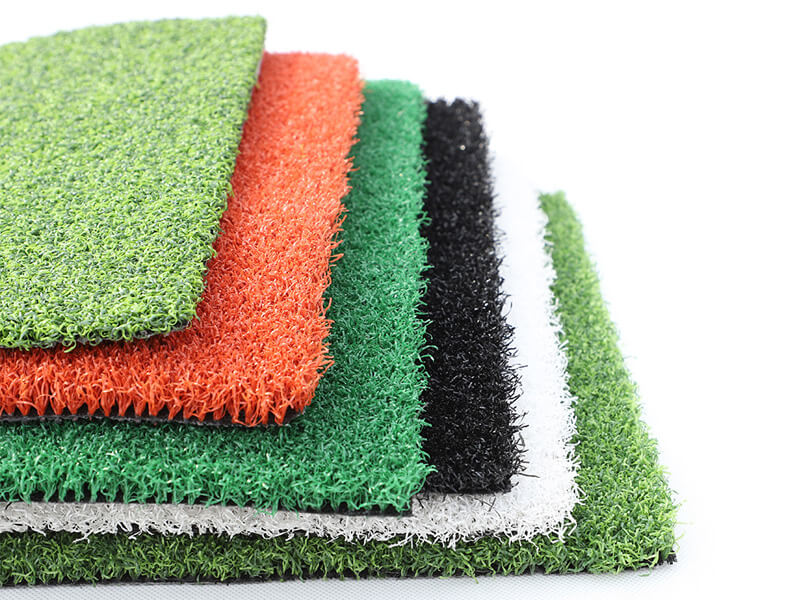
Introduction
Synthetic turf pitches are becoming the go-to choice for sports fields due to their durability and low maintenance. They provide a consistent playing surface that can withstand heavy use, making them ideal for football, soccer, and other sports.
Building the perfect synthetic turf pitch is more than just installing artificial grass. It involves planning, selecting the right materials, and proper installation.
In this article, we will discuss 20 tips that will help you build a high-quality synthetic turf pitch that lasts and performs at its best.
![artificial sport grass with Withstanding Heavy Traffic artificial sport grass with Withstanding Heavy Traffic]()
1. Choose High-Quality Synthetic Turf Material
Choosing the right synthetic turf material is crucial. Materials such as nylon are known for their durability, while polyethylene offers a softer feel. For different sports, select the turf that meets the specific requirements. A longer pile height, like 40-60mm, is ideal for football, while lower pile heights work better for sports like hockey. The fiber density plays a vital role in the field's resilience, ensuring it can withstand heavy traffic without losing performance.
2. Ensure the Turf is UV Resistant
Ultraviolet (UV) light can cause synthetic turf to fade over time, compromising its aesthetic appeal and performance. Therefore, it’s important to choose UV-resistant turf that maintains its color and strength under direct sunlight. This will ensure your turf looks fresh and performs optimally for many years, especially for fields located in sunny climates.
3. Consider the Fiber Density for Durability and Comfort
Fiber density refers to how closely the fibers are woven together. A higher density ensures better durability and minimizes the wear and tear from constant foot traffic. Higher-density turf also offers better cushioning and support, which is important for athletes' comfort during games. Ensure the synthetic turf you select is designed for high-impact sports to maximize its longevity.
4. Install a Comprehensive Drainage System
Proper drainage is essential to keep the synthetic turf field functional and safe. Without an efficient drainage system, water can accumulate on the surface, making the field slippery and unusable. Install perforated drainage pipes or a drainage mat beneath the turf to ensure water flows away quickly, even during heavy rainfall.
5. Opt for a Shock Pad or Base Layer
A shock pad provides additional cushioning, helping to reduce the impact on athletes' joints. This is particularly important for sports like football and rugby, where players frequently tackle or fall. The shock pad, along with a well-compacted base layer, helps absorb impact and ensures the pitch remains safe and comfortable for players.
6. Prepare the Ground Properly
A solid foundation is key to the longevity of the synthetic turf pitch. Start by excavating the area to remove any existing turf, debris, or rocks. The surface should be level and firm, which can be achieved by using a vibrating plate compactor to compact the ground. Proper ground preparation helps prevent the formation of dips or bumps in the future.
7. Excavate the Site to the Correct Depth
The depth of the excavation is critical to the performance and stability of the synthetic turf pitch. Typically, you should excavate the area to a depth of at least 75mm (3 inches) for a standard installation. For areas that will endure heavy use, a deeper excavation may be necessary to allow for a thicker base layer and better drainage. This ensures the turf sits properly and won’t shift over time.
8. Use a Well-Compacted Sub-Base Material
The sub-base provides the foundation for the synthetic turf, supporting its weight and allowing for proper drainage. Materials like crushed stone, gravel, or crushed limestone are ideal for creating a strong, stable base. The sub-base must be compacted thoroughly using a vibrating plate compactor to prevent shifting and sinking over time.
9. Ensure Proper Site Grading
Proper site grading helps direct water flow off the synthetic turf, preventing water accumulation. The surface should be graded to slope slightly, allowing water to flow off toward designated drainage areas. Ensure that the field is graded evenly, with no low spots where water could collect.
10. Cut and Seam the Turf Carefully
When installing synthetic turf, it’s important to cut the material accurately to fit the field’s shape. Use a sharp utility knife to make clean cuts and ensure that edges align properly. Proper seaming is essential to avoid visible joins. Use adhesive or specialized turf nails to securely join turf pieces together, ensuring they stay in place.
11. Secure the Turf Using High-Quality Adhesives or Turf Nails
To prevent the turf from shifting, it’s essential to secure the edges and seams using high-quality adhesives or turf nails. Turf nails should be placed every few inches along the edges to hold the turf securely in place. The use of strong, durable adhesives will ensure that the seams stay intact, even under heavy use.
12. Use the Right Type and Amount of Infill Material
Infill material helps keep the fibers upright and provides cushioning for the turf. Common infill materials include sand, rubber, and cork. Choose the right type of infill based on the sport being played and the desired performance. For example, rubber infill offers excellent shock absorption, while sand is commonly used for football fields. Ensure the infill is evenly distributed to maintain the turf’s performance.
13. Regularly Brush the Turf to Prevent Matting
Regular brushing is crucial to maintaining the appearance and performance of synthetic turf. Use a stiff brush or power broom to lift the grass fibers and evenly distribute the infill. This will prevent matting and keep the turf looking fresh. Brushing also helps distribute the infill material more evenly, ensuring consistent cushioning.
14. Use Specialized Cleaning Tools Like Leaf Blowers
Leaves, debris, and dirt can accumulate on synthetic turf, affecting its appearance and performance. Use specialized cleaning tools like leaf blowers to remove debris effectively. A leaf blower will help maintain the cleanliness of the field without damaging the turf fibers, ensuring the surface remains clear and functional.
15. Perform Routine Inspections and Repair Damaged Areas Promptly
Inspect the synthetic turf pitch regularly for any signs of damage, such as tears, loose seams, or uneven infill distribution. Repair any damaged areas as soon as possible to avoid further deterioration. Routine maintenance and prompt repairs will help extend the life of the turf and keep it in top condition.
16. Calculate the Total Cost of Installation
Before starting your synthetic turf project, it's essential to calculate the total cost, including materials, labor, and additional features like drainage systems, shock pads, and infill. Having a clear understanding of the costs will help you stay within budget and ensure that you allocate enough funds for each aspect of the project.
17. Consider the Long-Term Savings from Reduced Water Usage
One of the major advantages of synthetic turf is its low maintenance requirements. It doesn’t need regular watering, mowing, or fertilizing, saving both time and money in the long run. Additionally, synthetic turf eliminates water usage, making it an eco-friendly choice for areas facing water shortages.
18. Explore Financing Options for Affordable Installation
Installing a synthetic turf pitch can be a significant investment. Explore financing options or seek professional advice to ensure the installation is affordable. Many companies offer financing plans or leasing options to make the project more manageable, allowing you to pay over time while still getting a high-quality pitch.
19. Plan for Future Upgrades
When designing your synthetic turf pitch, consider potential future upgrades. For example, if you expect the pitch to receive more traffic in the future, plan for additional layers of infill or a thicker shock pad. Flexibility in the initial design can save you money and hassle later if you need to make improvements.
20. Work with a Reliable and Experienced Turf Installation Company
The quality of the installation is just as important as the materials used. Work with a reputable and experienced synthetic turf installation company to ensure the project is completed correctly. Professional installers have the knowledge and expertise to handle all aspects of the installation, from site preparation to final finishing, ensuring a smooth, durable, and high-performance pitch.
Conclusion
Building a synthetic turf pitch is a worthwhile investment. With the right materials, proper planning, and maintenance, it offers reliable performance for years. By following these 20 tips, you can create a high-quality pitch that serves athletes well. Companies like XiHY provide excellent products designed to meet these needs, ensuring durability and long-term value for your turf pitch.
FAQ
Q: What is a synthetic turf pitch?
A: A synthetic turf pitch is an artificial grass surface designed for sports. It provides a consistent, durable playing area with minimal maintenance compared to natural grass.
Q: How do I maintain a synthetic turf pitch?
A: Regular brushing, infill top-ups, and debris removal are key. Ensure proper drainage and inspect for damage periodically to keep the pitch in good condition.
Q: Why should I choose a synthetic turf pitch over natural grass?
A: Synthetic turf pitches require less maintenance, withstand heavy use, and offer a consistent playing surface year-round, making them ideal for sports fields.
Q: What are the costs involved in building a synthetic turf pitch?
A: Costs include turf material, installation, sub-base preparation, and drainage systems. The price varies based on field size and material quality.
Q: How long does a synthetic turf pitch last?
A: With proper care, a synthetic turf pitch can last 10-15 years, depending on the quality of the materials used and the level of maintenance.













